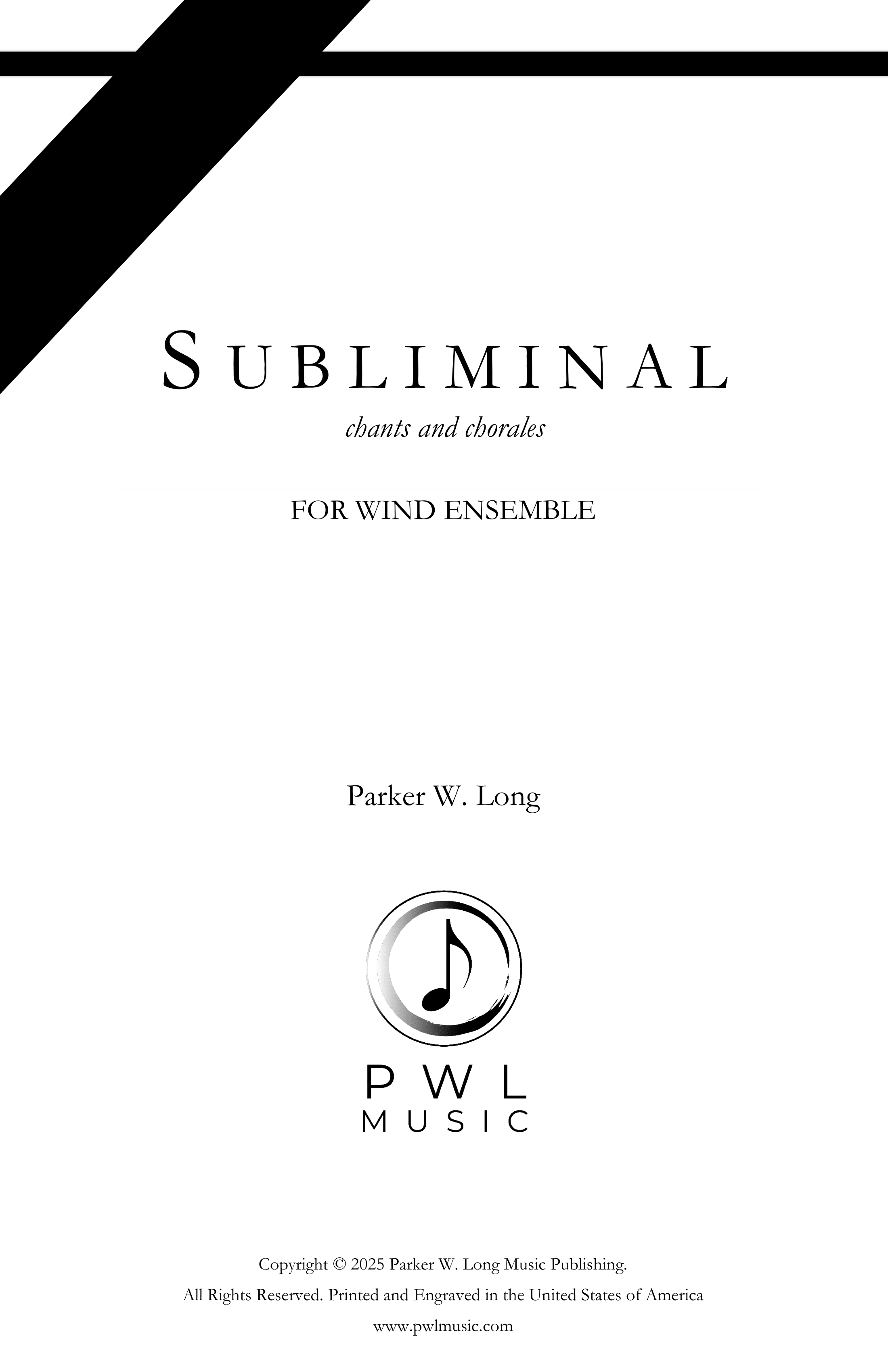 Image 1 of 1
Image 1 of 1


Subliminal - for wind ensemble (Med-Adv)
Subliminal is based around two elements being the chant and chorale. This piece is very careful to respect the spiritual nature of the following inspirations of Eastern Orthodox Christianity:
The Chant is melodically very simple, as the melody is based around Eastern Orthodox plainchant, surrounding an open fifth. The “subliminal messaging” is within the rhythmic structure. Each meter change (e.g., The open segment of M.3 to M.11) is based on the following prayer, “Jesus Christ, Son of God, have mercy on me, a sinner.” The aforementioned prayer was set to an acronym, and each letter of said acronym was set to morse code. Each meter is representative of a single letter of the acronym, so the rhythm must be precise and accurate. I do want to bring special attention to the 3/2 bars at the end of the chants, as well. This bar represents the word “sinner” and is to be played with reverence, specifically the 3/2 bar preceding M.42.
The Chorale is (also) melodically very simple. It is written with simple stepwise motion and short leaps within an open fifth and is also simpler in meter. This is to be performed a bit more meditatively than the chant for the following reason: repetition is remarkably important in Orthodox prayer as the repetition often turns from sounding like words to sounding like ethereal sound melding together with the room. For example, as the chant and the chorale begin to merge from M.33 to M.42 the feeling must begin to tense and mold into each other for a feeling of penance and transformation likened to that of spiritual conviction.
Subliminal is based around two elements being the chant and chorale. This piece is very careful to respect the spiritual nature of the following inspirations of Eastern Orthodox Christianity:
The Chant is melodically very simple, as the melody is based around Eastern Orthodox plainchant, surrounding an open fifth. The “subliminal messaging” is within the rhythmic structure. Each meter change (e.g., The open segment of M.3 to M.11) is based on the following prayer, “Jesus Christ, Son of God, have mercy on me, a sinner.” The aforementioned prayer was set to an acronym, and each letter of said acronym was set to morse code. Each meter is representative of a single letter of the acronym, so the rhythm must be precise and accurate. I do want to bring special attention to the 3/2 bars at the end of the chants, as well. This bar represents the word “sinner” and is to be played with reverence, specifically the 3/2 bar preceding M.42.
The Chorale is (also) melodically very simple. It is written with simple stepwise motion and short leaps within an open fifth and is also simpler in meter. This is to be performed a bit more meditatively than the chant for the following reason: repetition is remarkably important in Orthodox prayer as the repetition often turns from sounding like words to sounding like ethereal sound melding together with the room. For example, as the chant and the chorale begin to merge from M.33 to M.42 the feeling must begin to tense and mold into each other for a feeling of penance and transformation likened to that of spiritual conviction.

